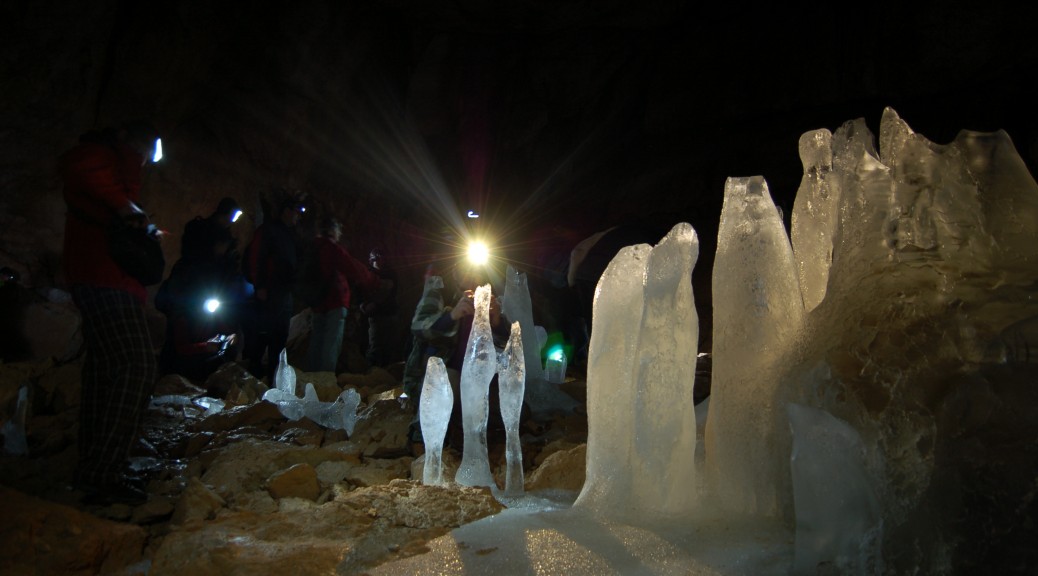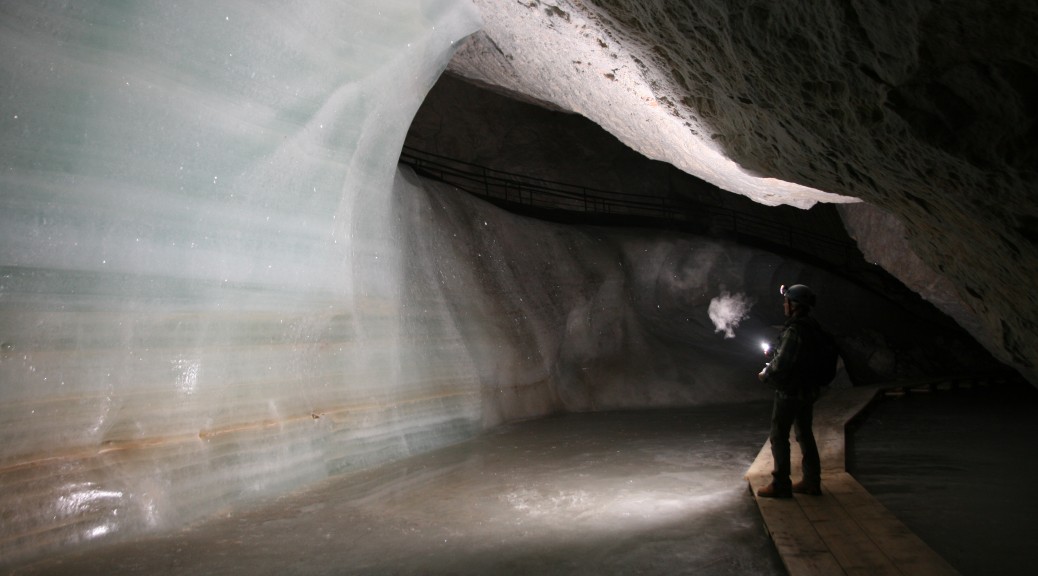It’s early June in the Austrian Alps. Tourists in shorts sweat their way up a trail from the cable car above Lake Hallstatt. But the summer heat doesn’t stop a group of scientists from pulling on brightly colored jumpsuits over their hiking clothes at the entrance to Mammuthohle, one of the many limestone caves that riddle the Dachstein Massif. Lukas Plan, a geophysicist at the University of Vienna, straps on his headlamp and pauses to warn the crowd of researchers about the cave they are about to enter. It won’t just be chilly inside, he cautions; it will be an Alpine meat locker.
The crowd, part of the fourth international ice cave workshop organized by a network of European geophysicists and glaciologists, is gathered to visit the cave’s year-round ice formations.
Plan turns toward the tunnel in the mountainside and opens the metal door. A rush of wind bursts out. The group prepares to enter, hoping to read the history of the region’s climate in the cave’s ice.
Continue reading Caves of Ice: The Next Frontier in Paleoclimatology?

